Headlines from the 2023 Responsible Seafood Summit
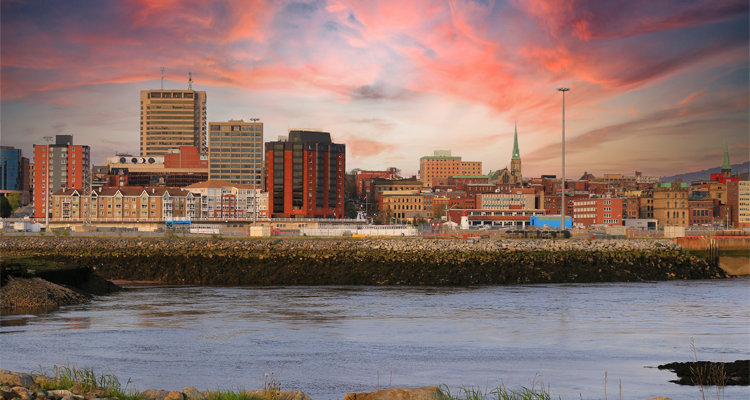
Welcome to Saint John!
Editors James Wright and Lisa Jackson have arrived in Saint John for the Global Seafood Alliance’s Responsible Seafood Summit. Check back here for brief updates on Tuesday, Wednesday and Thursday. Further coverage will be in next week’s issue of the Advocate.
Also, a reminder that New Brunswick is in the Atlantic time zone, one hour ahead of the Eastern time zone (New York).
Attendance reaches 340
According to GSA Communications and Events Manager Steven Hedlund, 340 attendees are convening in Saint John this year from all over the world.
“It’s finally here! We’re excited to be hosting around 340 delegates from around the world in beautiful Saint John, New Brunswick, Canada, for four days of learning, networking, field trips and entertainment. This is a special place. It’s a place where responsible aquaculture and traditional wild-capture fisheries have co-existed for years, setting the stage for this week’s discussions on bridging the differences and nurturing the commonalities between aquaculture and fisheries, with the goal of building a more unified front for seafood,” said Steven Hedlund.
“I’d like to thank the Atlantic Canada Fish Farmers Association, Atlantic Canada Opportunities Agency, the Province of New Brunswick and all 40-plus sponsors for helping us make the 2023 Responsible Seafood Summit a reality.”
Early morning plenary and opening remarks: ‘A more unified industry is a better one’
After a welcoming ceremony performed by Elder Edward Perley from St. Mary’s Wolastoqiyik First Nation, Wally Stevens, CEO of the Global Seafood Alliance, gave opening remarks.
“There are people in this room from all areas of the industry, and from all corners of the globe,” said Stevens. “And you’re all here for the same reason – because you believe that a more unified, more accountable, more responsible industry is a better one.”
Margaret Johnson, New Brunswick Agriculture, Aquaculture & Fisheries Minister, welcomed delegates and discussed the essential role of the blue economy in feeding the world.
“The demand for seafood is only increasing,” said Johnson. “According to the FAO, aquaculture will need to supply two-thirds of the world’s seafood requirements by 2030. Without aquaculture, the world will face a seafood shortage of 50 to 80 million tons by 2030.”
Glenn Cooke: ‘Science is vital’ to seafood sector’s success
During a fireside chat, Glenn Cooke, CEO of Cooke Inc., shared his professional wisdom with George Chamberlain, President of the Center for Responsible Seafood. As one of the few companies working in both fisheries and aquaculture, Cooke said that the industry has “come a long way since 10 years ago” in terms of working together, but there’s a need to band together to overcome future challenges.
“Fishery and farming groups have to work together,” said Cooke. “We have to coalesce into a major, stronger force – and I think that comes down to science. Whether on the farm side or the wild side, the role of science is very crucial.”
Cooke reiterated that science will play a “vital” role in combatting political agendas and decisions “driven by perception” and not necessarily by evidence.
“Our industry gets picked on because we’re seen as a weak industry,” said Cooke. “As an industry, we’ve got to be vigilant to get our message out there. We are responsible and we have to work as a group and as industry players.”
Cooke said certification programs are another avenue of “proving what we’re doing as an industry” and “making sure you’re doing things right,” but emphasized the need for unity.
“A good standard certification will make your company better,” said Cooke. “Customers want to see a third-party certification these days. I don’t like the ‘battling of the certifications’ that go on. The reality is, [they’re all] good standards, but it becomes a bit of a game that’s played against the retailer.”
The discussion also covered a range of other topics, such as keeping up with a burgeoning (and rapidly changing) online market to the challenges of small, independent producers to growing the global shrimp market. Cooke also shared his thoughts about the future of the industry, discussing how offshore technology shows “huge potential” but is “not for the faint at heart” and that RAS needs to become profitable in order to advance the sector.
“Huge investment is going into RAS, but no one has ever made money,” said Cooke. “If you don’t make money, you’re not responsible and you’re certainly not sustainable. RAS will get there someday, but my worry is that we’re putting much more money into the commercial units and not into the research.”
Ken Paul: ‘You can’t make good policies without involving community members
Ken Paul, Lead Fisheries Negotiator and Fisheries Research Coordinator of Wolastoqey Nation in New Brunswick, gave an informative and engaging presentation on Indigenous-settler relations in the territory and the role of local Indigenous communities in the seafood sector. One takeaway is the need for improved collaboration with First Nations partners.
“When we look at something like fisheries or aquaculture, we’re really focusing on the economics of it, on the technology, on policies and on science,” said Paul. “There’s no real respect for Indigenous knowledge. When you work with Indigenous communities, they’re going to balance the policies, the politics and stuff like that with the impact on communities. You can’t make good policies without involving community members.”
Paul stressed that many local First Nations are “active in the commercial fisheries” and are eager to move beyond licensing through the federal government.
“We actually want to govern [fisheries], but we don’t have the capacity,” said Paul. “We are in our own traditional territories, but we are at the bottom of all these economic indicators. We can’t switch it to say, ‘Hey, let’s go.’
Despite the hurdles, Paul emphasized that First Nations communities have a young, vibrant and growing workforce, which offers promising opportunities for the sector.
“Those industries that want to partner with First Nations, you’re probably going to have more predictability and more sustainability within your business and more potential for growth,” said Paul. “So I’m hoping that you can reach out to any of our First Nation members here today and start talking about our fisheries operations.”
Modest supply decline predicted for 2023 but optimistic for 2024
Gorjan Nikolik, senior analyst at Rabobank, presented the Aquaculture Production Data and Analysis, starting with global shrimp production.
“After a strong 2022, the global shrimp supply is expected to be flat or slightly lower in 2023,” said Nikolik. “But a return to growth is expected in 2024.”
Findings indicate that shrimp production in Ecuador – the world’s largest exporter – seems to be slowing down, albeit still with a high growth rate. The most recent forecast (14 percent) is 1.486 million metric tons (MT) for 2023, with 1.27 million MT for 2022.
Nikolik also remarked that the recovery of Brazil is “super impressive” and that Venezuela is “continuing the stellar growth rate shown in recent years,” quickly becoming “a sizable producer and clear number four in Latin America.” Findings also indicate that Penaeus monodon is an “up-and-coming” shrimp species, with a number of countries growing in the production of monodon.
“The comeback continues across Asia,” said Nikolik.
In terms of industry projections, more than 62 percent of survey respondents believe the global market will strengthen in 2024, and most predict that feed prices will be higher. However, the biggest concern for respondents is market prices, followed by the cost of aquafeed and market access.
Looking at salmonids, Nikolik reported that, after a flat two years, overall good supply growth is expected in 2024 and 2025, driven by primarily Europe, and reaching the 3 million MT mark for the first time.
“The Faroe Islands was a great success story, and they will have 30 percent [growth] next year, which is amazing,” said Nikolik.
Iceland and Australia were also highlighted as having “double-digit growth.” Rainbow trout also shows strong growth, especially in “all other” regions (which includes a range of countries, such as Finland, China, and Russia). For tilapia, Egypt – Africa’s tilapia champion – is recovering, but Nikolik said “the big story” is that “all other” African producers are now the fastest-growing tilapia region in the world.
“It looks small, but the Sub-Saharan region of Africa is doing fantastic,” said Nikolik. “In the future, watch for sub-Saharan African tilapia.”
Session No. 1: Talking ‘blind spots’ and the need for better communication
During the “Not All Sustainable Seafood Stories Are Simple” session, panelists Megan Sorby (a consultant for Kingfish Maine, where she was recently the operations manager), Brice Phillips (director of club store ales, Phillips Foods; Chair, National Fisheries Institute Crab Council) and Curtis Brown (marine biologist, Ready Seafood) tackled some complicated topics in the North American seafood industry, such as the challenge of forging alliances within the seafood industry.
“Unity, in the industry, has to be deliberate,” said Phillips. “You have to make a commitment to it. The responsibility for our fisheries and the livelihoods of the people who work in it – it falls on us, not on ratings, certifications, or on any other third party. We do that through a variety of different associations that we belong to.”
Phillips also stressed that fisheries and companies working together towards sustainability need to “accept and define [their] deficiencies.”
“If you’re not willing to talk about the dark spots or the blind spots in your fishery, you’re doing a major disservice,” said Phillips.
Likewise, Sorby shared that Kingfish Maine’s permitting process and pre-design work revealed a lot of those “blind spots” during public consultations.
“You can get into the weeds of the process and forget some of those key pieces you need to work on,” said Sorby. “Because we’ve been pressed on our process and demonstrat[ing] it to people that aren’t as familiar with the land-based side – it highlights where we need to learn more and communicate better.”
Brown highlighted the value of building transparency and trust with customers, looking at the North Atlantic right whale conflict with lobster and crab fishing as an example.
“It’s on us as producers and suppliers to make those connections with our customers,” said Brown. “[That means] speak[ing] from a real point of wisdom and understanding on what those issues are so that you can build trust with those buyers. We didn’t lose a pound of sales last year because I was visiting customers, giving them the same messaging I’m giving you right now, and ultimately, building that trust and confidence that purchasers aren’t going to get hit with one of those blind spots.”
While certification can bring assurances for some customers, Phillips said such programs are “well-intentioned” but are often used “improperly” by retail buyers.
“It’s looked at it as a way to shirk responsibility,” said Phillips. “I’d like to see more involvement between the producers and the seafood buyers. I’d like to see the seafood buyers get more informed and understand our challenges and our fisheries as opposed to just making decisions based on a single letter grade or a website. If you think about the socioeconomic destruction…when you just delist a country, the harm is irreparable. And I just hope buyers understand that.”
Zeal Industries’ Uptime device wins innovation award in fisheries category
Zeal Industries, a Hong Kong and New Zealand-based business that developed a “black box” for fishing vessels that promises to increase fisher safety and traceability in seafood, won the Responsible Seafood Innovation Award for Fisheries, determined by audience vote.
Ben So, chief innovation officer at Zeal Industries, told the Advocate last month that these “black boxes” should be standard equipment on commercial fishing vessels. Earlier this year, So started experimenting with technology that incorporates a gyroscope and accelerometer, a global positioning system and sensors that measure air temperature, pressure and other environmental conditions.
The device, called Uptime, transmits data to a cloud infrastructure where it’s deconstructed and stored in databases for future use. It’s part of a suite of “technologies for social impact” that the Hong Kong-based startup has developed — and their first maritime tool. Given its potential to improve seafood traceability and commercial fishing vessel safety, it’s also earned Zeal a place as a finalist for the Global Seafood Alliance’s Responsible Seafood Innovation Award, in the fisheries category.
Read our profile on Zeal Industries here:
Aquit wins innovation award in the aquaculture category
Aquit, a Chile-based biotech startup that has created a new tool for the salmon industry to control infections that harm fish and lower yield, has won the Responsible Seafood Innovation Award in the Aquaculture category.
As the global aquaculture industry expanded, the use of antibiotics emerged as both a lifeline and a looming threat. While instrumental in curbing diseases that plague aquatic populations, it’s also raised concerns about antibiotic resistance, environmental impact and the long-term sustainability of a vital food-production sector.
Chile-based AQUIT Corporation may have a solution.
By using a key protein that naturally occurs within fish to activate a salmon’s immunity, Aquit has created a new tool for the salmon industry to control infections that harm fish and lower yield. The company’s dietary supplement helps prevent disease without causing the inflammatory reaction that other immunostimulants do.
“We’re trying to solve this problem in a way that improves animal welfare and also in a way that its production is sustainable,” CEO Daniela Allerbon told the Advocate last month. “We’re honored and thrilled to be considered for the Innovation Award.”
Read our profile on Aquit here:
Day 2: Early morning plenary: Deep thoughts on the food systems of tomorrow
The second day kicked off with Lee Addams, partner/principal of food and agriculture, sustainability at EY-Parthenon, reflecting on what a reimagined food system might look like in 2035, and what changes may be on the horizon.
“We are seeing consumers make interesting trade-offs between spending on food and health and other activities,” said Addams. “In surveying consumers, we have found that over 50 percent, across age categories, want to spend less on physical things and more on experiences.”
In the wake of the pandemic, Addams raised compelling questions about how to remain competitive in the face of shifting consumer trends: From engaging with customers using multiple social media platforms to reaching consumers who are no longer strolling through the grocery aisles to the impact of food delivery systems.
“Do I go to the food or does it come to me? With delivery systems, like UberEats and Instacart, does everyone need a kitchen?” said Addams. “It’s very interesting to see how various people try to stay ahead of these shifts. It all comes down to a food system that’s more connected, more transparent, more sustainable and more personalized.”
Kim Gorton: ‘We are living in the ocean century’
Kim Gorton, president & CEO of Slade Gorton & Co. in Boston, spoke about how reducing food waste will be a “cornerstone of feeding a growing global population in a regenerative and sustainable way.”
“We will need another 75 billion pounds of seafood to feed the world in 2050,” said Gorton. “That’s just over 11 times the total current annual consumption in the United States. At the same time, in the U.S. each year, we waste approximately 133 billion pounds of food – and globally, the number is even more staggering. The FAO estimates that 2.87 trillion pounds of food are wasted each year.”
According to Gorton, 1.3 billion pounds of seafood is wasted each year in the United States alone, which translates into roughly 4 pounds per person. Looking at the supply chain, the biggest source of food waste comes from the home, with the cause largely being “misunderstood expiration dates and UI labels.”
“Some studies suggest that seafood waste is as much as 35 percent,” said Groton. “If we just stopped wasting so much, we take the pressure off of having to produce so much more food.”
For solutions, Gorton says it “starts with education,” such as teaching restaurant and retail operators about the economic and environmental benefits of taking a nose-to-tail approach to selling seafood. But reducing food waste also requires “investing in innovation” like DNA barcoding, cameras in restaurants to identify what food is being tossed out, and other technologies.
“Perhaps most significant will be the ability and power of machine learning, the internet of things and artificial intelligence to improve supply chain efficiency and resilience and reduce volatility cost and waste,” said Gorton.
‘Time is your greatest asset’
Tavish Scott, CEO of Salmon Scotland, spoke about the opportunities for the seafood sector may encounter in the next few decades in the face of a growing global population.
“If you take even just Africa, portions of the population will double by 2050, where hundreds of millions of people are looking into feeding in different ways,” said Scott. “It’s a huge opportunity for the future of the seafood sector.”
A range of topics were discussed, from the challenge of running a rural business in Scotland to mitigating the effects of climate change on the Scottish salmon industry to educating consumers about how the fish are farmed. Certification, he said, will also be important to providing assurances to conscious consumers.
A panel discussion with Susan Cole (Co-Owner, Cole Munro Foods Group), Joe Lasprogata (VP of product development, Samuels & Sons Seafood), Chip Terry (founder & CEO, BlueTrace) and Tabare Dominguez (VP commercial, DP World Canada) talked about the seafood sector’s capacity to respond to changing legislation and regulations around food safety, traceability and transparency.
“I think it is a good idea – people should know where products come from and it should be safe,” said Lasprogata. “But how do we get the world to comply? Everybody’s got ideas on how to do it but how do we get everybody into the same box? We’re wasting so much time on how to do it, we’ll never get to do anything.”
Labeling seafood products was highlighted as a key challenge – one that technologies, such as BlueTrace, are helping to solve by creating efficiencies. On the supply chain side, Dominguez also said technology can help “simplify some complexities.”
“There’s been huge improvements on the technology side,” he said. “Traceability is very important, but there’s another layer: visibility. Weather, human error – that can all affect the journey of cargo from point A to B. Knowing where to find cargo in the supply chain can help you know the integrity of the product. Then you can decide whether to expedite it, store it or reroute it somewhere else.”
Cole said that these technologies are becoming more readily available for small-scale producers, but may need to be adapted to reflect local realities.
“We’re currently working with many Indigenous communities in remote areas that didn’t have cell phone coverage,” said Cole. “So using a phone isn’t a great tool.”
In terms of sparking innovation, Tobey Corey, Executive Chair and COO of Cruz Foam, gave a thought-provoking talk on the power of creativity.
“Creativity is at the heart of everything,” said Corey. “And time is your most important asset.”
‘Aquaculture is making strides’
Robert Jones, global aquaculture lead at The Nature Conservancy (TNC), and Jayson Berryhill, co-founder of Wholechain/(en)visible, led a robust discussion about one of the critical issues facing the global aquaculture industry: the availability of deforestation and conversion-free (DCF) feed ingredients.
“TNC is really focused on urging companies to commit to 2025 target to eliminate deforestation and conversion in supply chains,” said Jones. “There’s been a lot of progress on this recently. A lot of work yet to do, but there are several companies that have made this commitment and are in the process of implementation.”
Throughout the seafood supply chain, companies have set DCF-sourcing goals, but currently face hurdles to actually achieving them. As a result, corporate policies are often not being enforced regionally due to logistical limitations in sourcing DCF ingredients.
In particular, the lack of certified DCF soy from Brazil and the challenges of tracing soy were discussed at length. Aquaculture makes up only about 5 percent of soy demand, totaling roughly around 15 million MT. While not necessarily the biggest sector, Jones said there’s potential for aquaculture to be the sector that leads market transformation.
“Aquaculture is one of the sectors that’s already making strides in this area,” said Jones. “The example I want to point to is the Norwegian salmon industry, which sources ProTerra-certified soy that is deforestation and conversion-free.”
Jones elaborated that early work in the 2010s on non-GMO and DCF soy for soy protein concentrate led the entire salmon and feed industry in Norway to commit to DCF supply chains by 2020.
“What can you do? The first step is committing your supply chain to be conversion-free by 2050,” said Jones. “I think retailers can be really important in helping drive this conversation forward.”
However, implementation can be tricky. Jayson Berryhill, co-founder of Wholechain/(en)visible, also spoke about the unique challenges of soy traceability, which include soy segregation.
“It’s like tracing water in a river,” said Berryhill. “Once soy enters silos and vessels, co-mingling occurs.”
Berryhill also emphasized that only 4 percent of global soy is certified as of 2020, and there are 79 different certifications on the market.
“We need systems to talk the same language,” said Berryhill. “We need something that can be shared across the supply chain so information can be passed on.”
‘Get fun with seafood’
The late morning plenary focused on adapting and responding to a changing seafood consumer market that’s marked by inflation, time-starved customers and flat sales following the pandemic cooking seafood-at-home craze. Retailers and food service operators are looking beyond traditional sales channels and to new promotions to grow the seafood category, but how do they get there?
As a starting point for the discussion, it’s vital to look at research on consumer perceptions and buying behavior. According to Matt Craze, founder and lead researcher at Spheric Research, the U.S. consumer is “confused and unaware” when it comes to purchasing seafood.
“What we find is that an awful lot of people don’t know if they’re buying farmed or wild, for example,” said Craze. “The younger generations are even less aware of where things are coming from and what they’re actually eating. It’s a remarkably high number.”
Interestingly, Craze also discussed how younger generations (Gen Z, millennials, Gen X) eat seafood more frequently and this accelerated during the pandemic. But instead of cookbooks, they’re turning to social media and other channels for cooking inspiration and guidance.
“Younger consumers are growing up watching how food is made, instead of reading recipes,” said Craze. “Influencers are helping younger people learn how to cook things like salmon. But the younger groups also have more angst about seafood than any other generation.”
For instance, survey findings indicate that Gen Z respondents don’t perceive seafood as environmentally better than chicken. Rather, they equate “local” with “environmentally friendly.” Craze said this may indicate a need for the seafood industry to make concerted efforts to retain and grow its base of younger consumers.
Hannah Lindoff, senior director of global marketing and strategy at the Alaska Seafood Marketing Institute (ASMI), shared stories of recent marketing successes and failures that offered valuable lessons for going forward. One takeaway from planning marketing events worldwide is that “quality and taste” should be top priorities.
“We had killer marketing at an event in Brazil, but it all fell apart,” said Lindoff. “The dishes involved in this festival really didn’t travel well. We need to figure out how to deliver food that looks good (because it needs to go on Instagram and TikTok) and make it taste good.”
Despite some marketing flops, Lindoff shared how engaging with influencers has helped market products.
“We created this cooler box that said ‘There’s something wild inside,’” said Lindoff. “The bloggers gave us a ton of content. This year, we also held a culinary event that brought chefs from all over the world to Alaska. We let them see responsible management in action, let them cook a lot, and let Alaska sell Alaska.”
Michael-Ann Rowe, seafood and agrifood spokesperson and marketing expert, emphasized the importance of “lightening up” heavy conversations about seafood in order to better engage with consumers.
“We need to make seafood a whole lot more fun,” said Rowe. “Make seafood normal and get fun with seafood.”
Now that you've reached the end of the article ...
… please consider supporting GSA’s mission to advance responsible seafood practices through education, advocacy and third-party assurances. The Advocate aims to document the evolution of responsible seafood practices and share the expansive knowledge of our vast network of contributors.
By becoming a Global Seafood Alliance member, you’re ensuring that all of the pre-competitive work we do through member benefits, resources and events can continue. Individual membership costs just $50 a year.
Not a GSA member? Join us.
Author
Tagged With
Related Posts
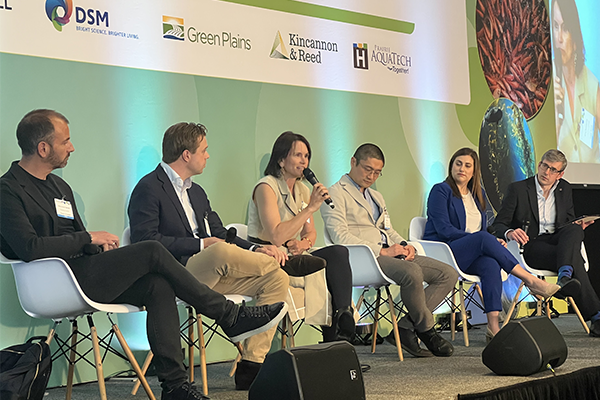
Innovation & Investment
‘We have 15 years to fix this planet’: Blue Food Innovation Summit explores potential of restorative aquaculture – and the challenges to scaling
At the Blue Food Innovation Summit, discussions centered on restorative aquaculture’s potential and financing the ocean’s capabilities.
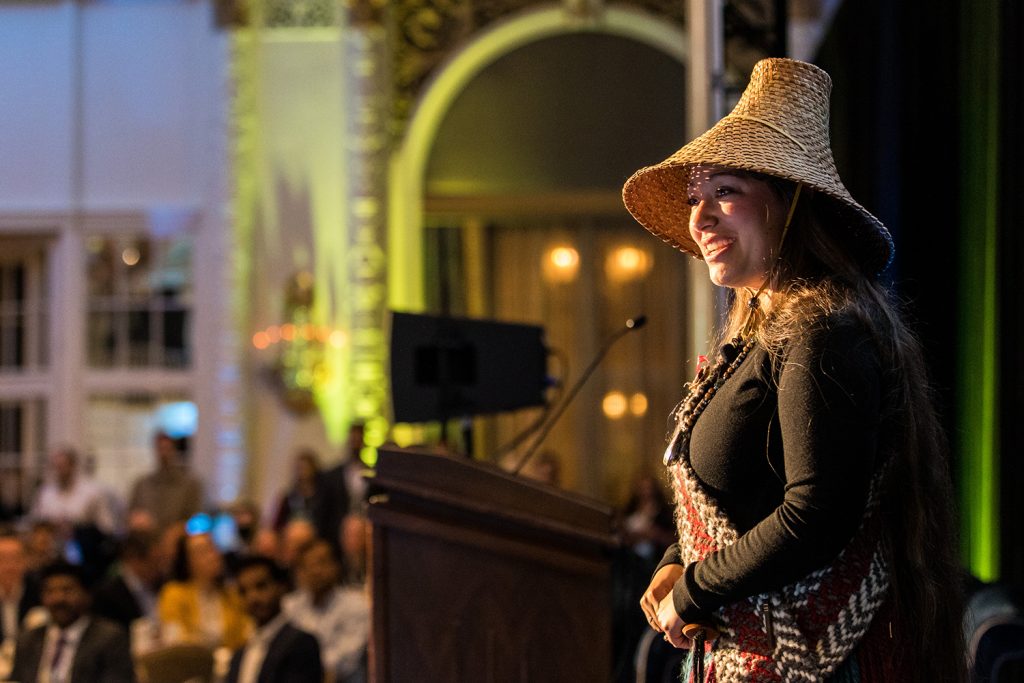
Intelligence
Back on stage: GOAL returns to tackle a wide range of seafood subjects
GOAL: The Responsible Seafood Conference in Seattle features a diverse range of speakers with varied backgrounds and areas of expertise.
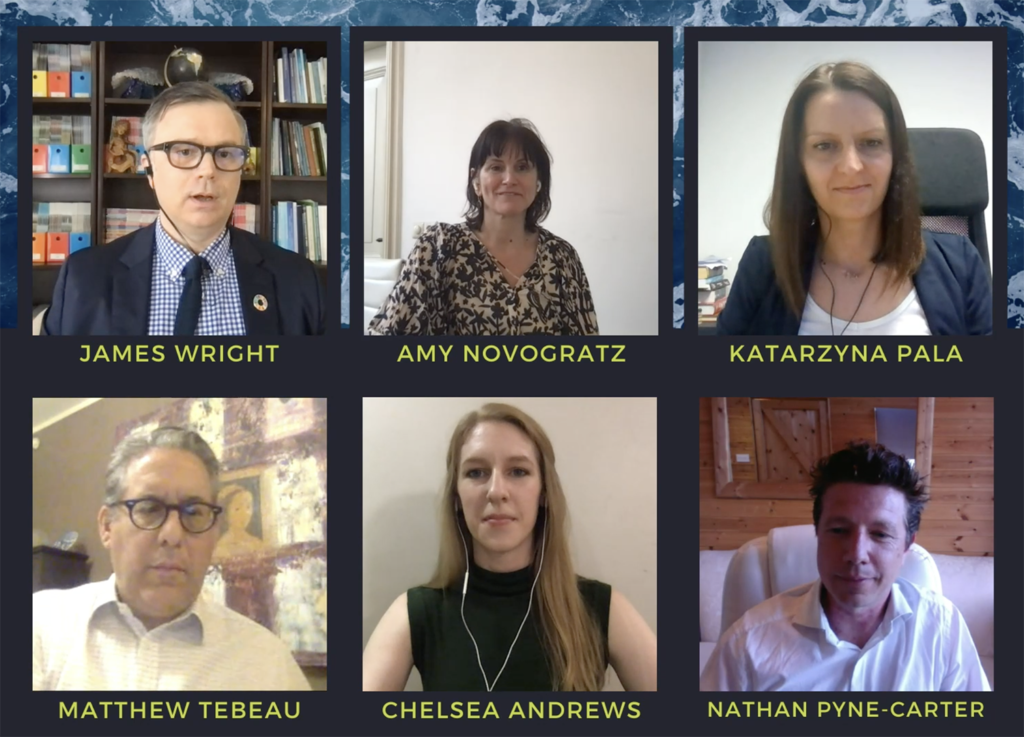
Innovation & Investment
Entrepreneur Tony Fadell joins GOAL 2021 to talk technology and aquaculture
Former Apple and Google developer Tony Fadell told GOAL attendees that new technologies must smooth the pathway to the marketplace.
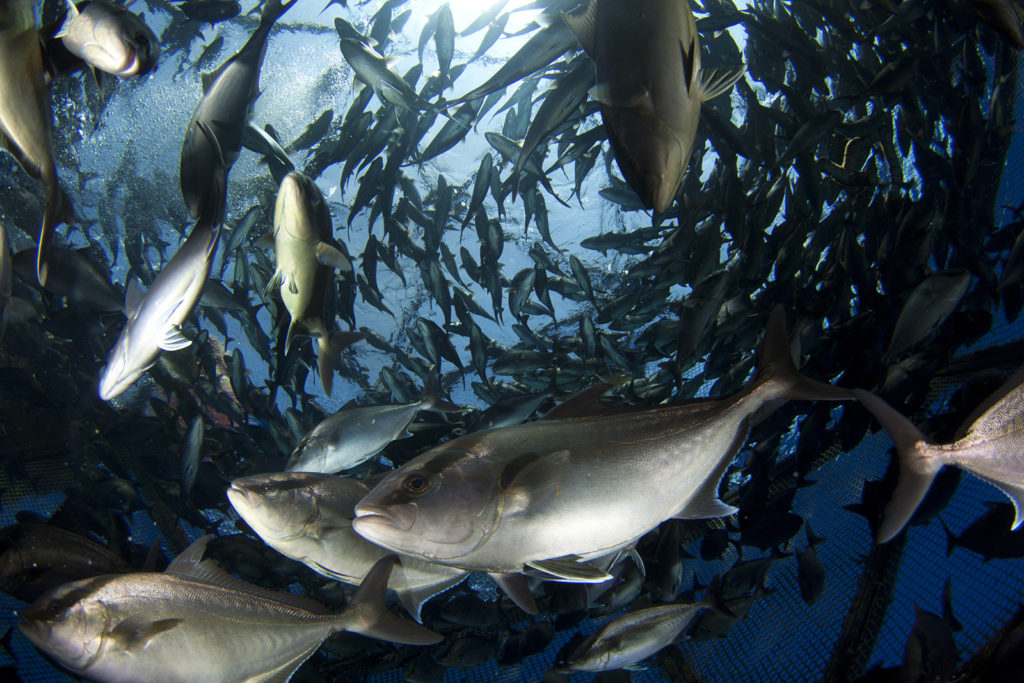
Intelligence
The keys to making land-based and offshore aquaculture work? Scale, scale, scale
GOAL delegates heard that the biggest opportunity for land-based and offshore aquaculture is to scale production and increase seafood supplies.



